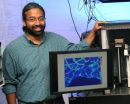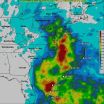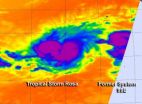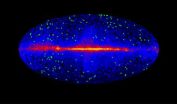(Press-News.org) In one of the largest studies of its kind ever conducted, an international team of scientists has thrown new light on the genetic basis of the inflammatory bowel diseases (IBD). Crohn's disease and ulcerative colitis, the two most common forms of IBD, are chronic inflammatory digestive disorders affecting 230,000 Canadians. Dr. John Rioux, researcher at the Montreal Heart Institute and Associate Professor of Medicine at the Université de Montréal, is one of the researchers who have identified 71 genetic regions newly associated with inflammatory bowel disease (IBD), increasing the total number discovered to date to 163, in one of the largest studies of its kind. Also, the study points out that these regions showed a striking overlap with those implicated in autoimmune diseases and in immune deficiencies. Even more surprising was the observation of a significant overlap with genetic regions controlling our response to microbial infections such as in the case of tuberculosis. These highlights were published in the prestigious scientific journal Nature today.
Moreover, these findings suggest that IBD results from overactive immune defence systems that evolved to fight off serious bacterial infections. In IBD, the body's immune system produces an ongoing inflammatory reaction in the intestinal tract that injures the intestinal wall, leading to diarrhea and abdominal pain. IBD patients typically require lifelong treatment with drug therapy, and often need surgery to repair tissue damage caused by the disease.
Common research
Up until this point, researchers have been studying Crohn's disease and ulcerative colitis separately. This study was based on the fact that there seems to be a vast amount of genetic overlap between the two disorders.
In the first step of the study, the researchers conducted a "meta-analysis" of 15 previous genomic studies of either Crohn's disease (CD) or ulcerative colitis (UC), the two most common forms of IBD, creating a large dataset that combined genetic information from some 34,000 individuals who took part in those studies. The results then formed part of a second meta-analysis that included data from new genome-wide scans of more than 41,000 DNA samples from CD/UC patients and healthy comparison subjects collected at 11 centers around the world by the International IBD Genetics Consortium.
"We have greatly expanded the map of genetic regions that are associated with IBD", agreed Dr. John Rioux, co-lead author of this study and chair of the Consortium, with Jeffrey Barrett of the Wellcome Trust Sanger Institute in Cambridge, England, lead author of the study. "Each of these regions only increases a person's chance of developing IBD by a fraction of a per cent and even taken together they cannot tell us who will or will not develop the disease. But they each tell a small story about the biology of this disorder, and by combining them we find biological pathways that, if disrupted, can lead to IBD."
Immune system: a major factor
Dr. Rioux and the international team of researchers also studied the activity of genes in their IBD regions in hundreds of different types of cells involved in the immune system. They found that certain cells tended to produce more of these IBD genes, including many that are involved in the body's first line defence against invasion. This illustrates that an immune response seems to be a major factor in IBD: when a bacterium is detected, these cells are not just activated, but become overactive.
"We see a genetic balancing act between defending against bacterial infection and attacking the body's own cells," said Dr. Barrett. "Many of the regions we found are involved in sending out signals and responses to defend against bad bacteria. If these responses are over-activated, we found it can contribute to the inflammation that leads to IBD."
Nearly 100 scientists in 15 countries contributed to the new work, which "highlights the incredible power that working together in a large team can have," said Barrett. "This would not have been possible without the thousands of DNA samples from patients with these conditions assembled by the International IBD Genetics Consortium. Collectively, our findings have begun to uncover the biological mechanisms behind this disease."
About inflammatory bowel diseases
IBD results from inflammation in the digestive system and affects 2.5 million people worldwide. With over 230,000 cases, Canada has among the highest frequency of people with IBD in the world. Although it can affect any age group IBD is more likely to develop in teens and adults between 15 and 30 years of age. IBD is a lifelong debilitating condition. It can have a devastating impact on the physical and social lives of those affected.
###
About the Montreal Heart Institute: www.icm-mhi.org.
About the Université de Montréal: www.umontreal.ca
Notes to Editors:
Publication Details
Luke Jostins, Stephan Ripke, Rinse K Weersma, et al (2012). 'Host-microbe interactions have shaped the genetic architecture of inflammatory bowel disease'. DOI:
Published in Nature online November 1st, 2012.
END
Adding an angiogenesis inhibitor to treatment with a HER2-inhibiting drug could improve outcomes for patients with HER2-positive breast cancer who develop brain metastases. In their report published online in PNAS Plus, Massachusetts General Hospital (MGH) investigators report the first preclinical study combining antiangiogenic and anti-HER2 drugs in an animal model of brain metastatic breast cancer.
"We have shown dramatic improvement in survival by slowing the growth of brain metastatic, HER2-amplified breast cancer," says Rakesh Jain, PhD, director of the Steele ...
PHILADELPHIA - Arterial stiffening has long been considered a major risk factor for cardiovascular disease. Keeping arteries soft and supple might reduce disease risk, but the mechanisms of how arteries stave off hardening has remained elusive.
Researchers from the Perelman School of Medicine, University of Pennsylvania, Wistar Institute, and The Children's Hospital of Philadelphia have discovered that the protein apolipoprotein E (apoE) plays a major role in maintaining arterial softness by suppressing production of the extracellular matrix, a network of connective ...
AMES, Iowa – The human body has more than a trillion cells, most of them connected, cell to neighboring cells.
How, exactly, do those bonds work? What happens when a pulling force is applied to those bonds? How long before they break? Does a better understanding of all those bonds and their responses to force have implications for fighting disease?
Sanjeevi Sivasankar, an Iowa State assistant professor of physics and astronomy and an associate of the U.S. Department of Energy's Ames Laboratory, is leading a research team that's answering those questions as it studies ...
NASA's Tropical Rainfall Measuring Mission, or TRMM, satellite acts as a rain gauge in space as it orbits the Earth's tropics. As TRMM flew over Hurricane Sandy since its birth on Oct. 21 it was gathering data that has now been mapped to show how much rain the storm dropped along the U.S. eastern seaboard.
Much of the recent deadly flooding along the northeastern United States coastlines was caused by super storm Sandy's storm swell. Strong winds from Sandy persistently pushed Atlantic Ocean waters toward the coast. High tides that occurred at the same time also magnified ...
Wind shear is pushing the bulk of Tropical Storm Rosa southeast of the storm's center, and that's evident on infrared imagery from NASA's Aqua satellite. Meanwhile System 99E, that was trailing behind Rosa on Oct. 31, has now "given up the ghost" as a result of that same wind shear.
When NASA's Aqua satellite flew over Tropical Storm Rosa at 5:41 a.m. EDT (0951 UTC) on Nov. 1, 2012 the Atmospheric Infrared Sounder (AIRS) instrument took an infrared picture of Tropical Storm Rosa and remnants of System 99E. The AIRS data showed the strongest convection (rising air that ...
Parents with social anxiety disorder are more likely than parents with other forms of anxiety to engage in behaviors that put their children at high risk for developing angst of their own, according to a small study of parent-child pairs conducted at Johns Hopkins Children's Center.
Authors of the federally funded study say past research has linked parental anxiety to anxiety in children, but it remained unclear whether people with certain anxiety disorders engaged more often in anxiety-provoking behaviors. Based on the new study findings, they do. A report on the team's ...
After Tropical Cyclone Nilam made landfall in southeastern India NASA's Terra satellite passed overhead and saw the storm's clouds blanket the entire southern portion of the country from Chennai southward.
On Nov. 1 at 05:50 UTC (1:50 a.m. EDT), the Moderate Resolution Imaging Spectroradiometer (MODIS) instrument that flies aboard NASA's Terra satellite captured a visible image of Tropical Depression Nilam.
The MODIS image showed that Nilam's clouds stretched as far north as Andra Pradesh, a state in east central India. It covered the states of Goa and Karnataka in ...
For many American teens, the road to college goes through the chapel.
Sociologists from Brigham Young University and Rice University found religiously-affiliated youth are 40 percent more likely to graduate high school than their unaffiliated peers and 70 percent more likely to enroll in college.
The researchers note that teens' fellow church-goers are an important factor, serving as mentors who help teens set their sights high.
"Youth have a unique chance to form relationships with peers and mentors outside of their classroom at school or their neighborhood at home," ...
The Suomi National Polar-orbiting Partnership (NPP) satellitecaptured a night-time view of New York City, New Jersey and eastern Pennsylvania that revealed the extent of the power outages caused from Hurricane Sandy's landfall on October 29. Suomi NPP is a partnership between NASA, the National Oceanic and Atmospheric Administration (NOAA), and the U.S. Department of Defense.
The Visible Infrared Imaging Radiometer Suite (VIIRS) on Suomi NPP captured a night-time view of the Mid-Atlantic on the morning of Nov. 1, 2012,revealing areas where power has not been currently ...
VIDEO:
This animation tracks several gamma rays through space and time, from their emission in the jet of a distant blazar to their arrival in Fermi's Large Area Telescope (LAT). During...
Click here for more information.
Astronomers using data from NASA's Fermi Gamma-ray Space Telescope have made the most accurate measurement of starlight in the universe and used it to establish the total amount of light from all of the stars that have ever shone, accomplishing a primary ...






